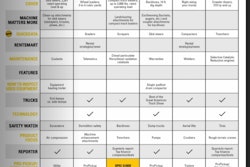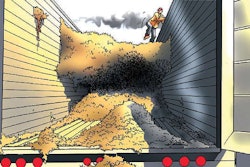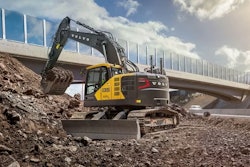Source: Caltrans
In an effort to raise public awareness about the safety and integrity of the new east span of the Bay Bridge, Caltrans Director Malcolm Dougherty called on the Sacramento Bee to retract a recent story that made false claims about the bridge.
In a letter to Sacramento Bee Executive Editor Joyce Terhaar, Dougherty outlines the major flaws in the May 27 story by reporter Charles Piller and calls on the paper to set the record straight. A Caltrans review of the Bee’s assertions has determined that they are completely inaccurate. Every part of the new span has been thoroughly tested by expert engineers and independent experts who have determined that the bridge is safe and sound.
“The safety of millions is dependent on the engineering work we do on structures like the Bay Bridge,” writes Dougherty. “As public servants, we are not beyond criticism or questioning of how we do our jobs, but we ask that you understand your unique responsibilities to present a fair picture of our work. We also expect you to get it right.”
Director Dougherty also took the opportunity to reassure Californians that the new eastern span of the Bay Bridge meets or exceeds all safety standards.
“Every concrete pile in the new bridge’s tower foundation has passed three rigorous, mandatory safety tests,” said Dougherty. “The tower foundations were designed to exceed normal safety standards. Every aspect of the bridge has been tested, checked and rechecked multiple times. These tests were reviewed by a panel of internationally-renowned experts who have confirmed the integrity and seismic safety of the bridge.”
Director Dougherty’s letter to the Sacramento Bee follows:
June 7, 2012
Ms. Joyce Terhaar
Executive Editor, Sacramento Bee
2100 Q Street
Sacramento, CA 95816
Ms. Terhaar:
I am writing to formally request that the Sacramento Bee immediately print a retraction of the story, “Records Raise Doubts on Bay Bridge Concrete,” which ran in your paper on May 27, 2012.
The story contains false information and a selective reading of records gathered by your reporter.
· Your reporter was given voluminous evidence that contradicts the story’s conclusion that the bridge foundations were inadequately tested.
· Evidence suggests that your reporter failed to test the accuracy of his claims and omitted information that contradicted his conclusion.
· The story includes unsubstantiated and untrue accusations that Caltrans officials misrepresented or dismissed important engineering evidence during bridge construction.
· Your reporter denied Caltrans representatives the opportunity to fully respond to “expert” and anonymous opinions he solicited for the story.
Caltrans takes this breach of the public’s trust seriously and raises the following specific examples of inaccurate and misleading reporting in “Records Raise Doubts on Bay Bridge Concrete.”
The story claims that Caltrans was “prevented” from doing “further examination or repair” on Pile 3 because Caltrans did not see a subcontractor’s report identifying a 19-foot anomaly using “crosshole sonic logging (CSL)” in Pile 3.
This is false. It incorrectly represents the role and requirements for CSL and it is contradicted by records that were supplied to the reporter.
· Caltrans did substantial further examination. The concrete in Pile 3, as in all the piles, was designed to meet certain strength requirements, not to set in a short period of time. Concrete for Pile 3 was tested 28 days after it was poured and met strength requirements. The contractor tested Pile 3 on day four – a full 24 days before the Caltrans test. Caltrans uses cylinder break tests to assess concrete strength, and checks this over extended intervals, sometimes in as little as 14 days after concrete is poured and in some cases as long as 56 days after concrete was poured.
· The story makes an unsubstantiated hypothesis that a concrete additive may have been overused, which is directly contradicted by certifications and factual records indicating consistent, correct concrete mix was produced. This was verified by inspection, slump and cylinder break tests.
· Subsequent tests and examinations by Caltrans showed that Pile 3 had, in fact, set and was sound:
o Eleven days after the concrete was poured, and seven days after the CSL test, the contractor conducted “chipping” on Pile 3. This is a practice in which they jackhammer away at the top of a pile until we are satisfied we have hit solid, pure concrete. Chipping on Pile 3 showed that the concrete had set. The chipping record was supplied to your reporter.
o Seven days after the concrete was poured, and three days after the CSL test, Caltrans tested Pile 3 using “Gamma-Gamma Logging” (GGL) technology. This test shows whether there are significant anomalies in the concrete. The test showed that Pile 3 had no significant anomalies. A record of this Gamma-Gamma Logging test was supplied to your reporter.
o Twenty eight days after the concrete was poured, and 24 days after the CSL test, Pile 3 was subjected to a “cylinder break test,” which showed the concrete in Pile 3 was set and solid. Information on this test was supplied to your reporter.
The story contains multiple unsubstantiated assertions in the editorial voice: “Suspicious concrete,” “suspect and inadequately tested concrete,” “poor concrete.” These phrases appear without attribution, and hang on false and misleading information about the tests.
· Take the very test results that your reporter bases this entire story upon, the Crosshole Sonic Logging test conducted by Olson Engineering. In his story, your reporter writes that Olson detected the “problem concrete” in Pile 3 in 2007 and “suggested new sonic tests.” This is not accurate.
· Olson suggested new sonic tests or a gamma-gamma test. Caltrans performed the GGL tests, consistent with Olson’s suggestion, three days after the cross hole sonic test and seven days after the concrete was poured. This test showed the concrete had no significant anomalies and had the required density. Again, the reporter was given all this information but he omitted Olson’s suggestion that gamma-gamma tests could be performed in lieu of sonic tests, creating the false impression that Caltrans failed to verify the safety of the pile.
The Bee’s reporting on Pile 8 similarly relies on conclusions invented by the reporter. He asserts that Pile 8 had “inferior concrete” was “plagued by test and construction problems” and was beset by “construction abnormalities” without providing any evidence to support this editorializing.
· His evidence seems to be that workers chipped for six days on the concrete in the course of their normal examination and protocol instead of three.
· The number of days spent on chipping is irrelevant and has nothing to do with the quality of concrete. The statements concerning Pile 8 have no basis in fact and are presented merely to support a theory invented by the reporter.
· All tests – the “slump test” performed during the pour, the “break test,” the GGL tests performed after the pour and the chipping – show no abnormalities and give Caltrans confidence that this pile is safe. This information was shared with your reporter
While Caltrans can show numerous other examples in this story that show how your reporter built a thesis on a faulty foundation, I close with a fact that should give the Sacramento Bee cause for concern as an institution.
· According to our records, your reporter last contacted Caltrans with substantive questions regarding the testing and construction of the bridge foundation on April 30, a full 27 days before his story was printed.
· He never gave Caltrans an opportunity to fully respond to his baseless allegations or his invented theories about concrete drying.
· He never asked Caltrans to fully respond to false allegations made by an anonymous source.
· He gathered preliminary information from Caltrans in April, and apparently spent 27 days attempting to knock it down without circling back for our response.
If Caltrans had constructed the new span of this bridge the way this story appears to have been constructed, Californians would have reason to worry. Instead, Caltrans’ records show a pattern of care and quality assurance at every stage of the Bay Bridge project. Your reporter was given all of this information and documentation. Unfortunately for your readers, it didn’t make it into the paper.
Caltrans takes its job seriously. The safety of millions is dependent on the engineering work Caltrans does on structures like the Bay Bridge. As public servants, Caltrans is not beyond criticism or questioning of how we do our jobs, but we ask that you understand your unique responsibilities to present a fair picture of our work. Caltrans also expects you to get it right. Your reporter had the information to do this, but he chose to ignore it. It is for this reason Caltrans asks for a full retraction of the story.
Sincerely,
Malcolm Dougherty
Director














